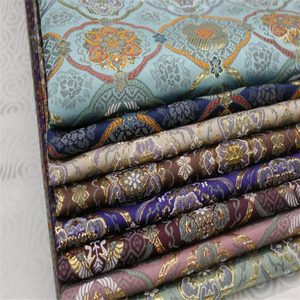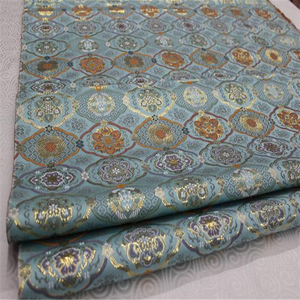(41 products available)


























































 Ready to Ship
Ready to Ship
































































































































































Hanbok for boys comes in different styles. Each has unique features. Here are some types of boys' hanbok:
Jeogori
This is the hanbok top. It is short and fits well. The sleeves are long and loose. They allow for easy movement. The Jeogori has ties in front. They help adjust the fit. The top can match different bottoms. Boys wear it with trousers or skirts. The Jeogori is simple but smart. It is suitable for various events. It shows Korean culture well. The design is practical for daily wear. The Jeogori is a staple in the hanbok.
Chima
Chima is the traditional skirt. Girls wear it in hanbok. It is a vital part of the hanbok. The design is simple yet elegant. It has pleats that add volume. The Chima sits high on the waist. It falls to the ankles. The length allows for easy movement. The skirt is suitable for various events. It can be daily or formal.
Durumagi
This is a traditional Korean coat. Men and boys wear it over the hanbok. It has a loose fit. The sleeves are wide and long. They cover the hands. The hem falls below the waist. The coat has a simple design. It usually comes in dark colors. Boys wear it for warmth in winter. The coat is suitable for formal events. It is a part of the hanbok. The Durumagi is a staple in Korean fashion. It shows the culture's focus on comfort and style.
Hanbok
A hanbok is the traditional Korean attire. Boys' hanbok has vibrant colors. It has a simple design with clean lines. The top is short and fits the waist. It has long sleeves that are loose. The bottoms are wide and fall to the ankles. They sit high on the waist. The hanbok is suitable for festivals and ceremonies. It includes national holidays. The design allows for easy movement. This makes it suitable for daily wear. The hanbok shows Korean culture well. It symbolizes unity and peace.
Hanja
This is a unique hanbok for boys. It has a modern twist. The top is short with vibrant colors. It has long sleeves and a simple design. The bottoms are wide and usually dark. They sit high on the waist. The hanja is suitable for casual events. It is a comfortable and stylish option. The design is practical for daily wear. The hanja shows the blend of tradition and modernity. It is a testament to Korean fashion's evolution.
The hanbok for boys consists of three main parts. These are a jeogori, a chima, and a manteau. The jeogori is the upper part. It is a short jacket. The sleeves are long and loose. The hemline is above the waist. The jacket has a front opening. The opening is crossed and tied with a long ribbon known as the norigae.
The chima is the skirt. It is long and wraps around the body. It is tied at the waist with a wide belt known as the meori. The manteau is a coat. It is worn over the jeogori and chima. It is long and has a straight cut. The coat has a front opening and is tied with a ribbon.
The hanbok for boys is designed for comfort and ease of movement. The loose-fitting garments allow for free movement and play. The hanbok has vibrant colors. These colors reflect cultural significance and seasonal changes.
The hanbok is usually worn during festivals. It is also worn during family gatherings. The boys' hanbok has a timeless design. It has a blend of tradition and modernity. The hanbok has a simple and elegant style that is suitable for all boys. The hanbok has a flat collar and a wrap-around top. The top is secured with a long ribbon. The hanbok skirt is tied at the waist with a wide belt. The boys' hanbok may feature Hanbok patterns. These patterns may be floral or abstract designs.
Wearing and matching the different parts of the boys' hanbok can be more complex. Here are five suggestions for how to wear and match the hanbok to help create a cohesive and stylish appearance:
Contrast the Color of the Top and the Pants
Traditionally, the hanbok for boys has a top part of a different color than the bottom part. In contemporary designs, this may still hold true, so one way to create a cohesive look is by having the colors contrast each other. However, the top and pants can also be of the same color.
Complementary Color Scheme
The boys' hanbok can also be worn in a way where the top and the bottom part have complementary colors. This is when the colors are opposite when the color wheel is divided in half. For example, orange and blue, red and green, yellow and purple. This color scheme can give the hanbok a vibrant and eye-catching look.
Patterns and Solids
Another way to match the hanbok is to pair the patterned top with solid-colored pants. Or vice versa, the top can be plain, and the pants can be patterned. This can add visual interest to the overall look.
Monochromatic Hanbok
For a more modern and minimalist approach, try matching the top and pants in the same color and different shades. This monochromatic look can be very stylish and sophisticated.
Accents and Accessories
Finally, don't forget about the power of accessories to match the hanbok. Try adding a pop of color with a traditional norigae or other accessories. These can help tie together the overall look and add a personal touch.
Q1: What are the primary components of a traditional boys' hanbok?
A1: A traditional boys' hanbok comprises several key components. The jeogori, or jacket, is worn on top and is usually tied with a ribbon at the front. Boys also wear a chima, which is a skirt but is not commonly worn by boys; instead, they wear baji, pants that are tied at the waist and cuffs. An overcoat called the durumagi may be worn over the hanbok for additional warmth and is often accompanied by a traditional cap known as a mo, which is worn on the head.
Q2: When do boys typically wear hanboks?
A2: Boys typically wear hanboks during traditional Korean holidays such as Chuseok (Korean Thanksgiving) and Seollal (Lunar New Year) to honor their heritage and participate in family rituals. They also wear hanboks for celebrations like weddings, birthdays, and other significant life events, as well as for cultural performances and ceremonies, where the attire's historical and cultural significance is honored.
Q3: What distinguishes a hanbok from other traditional attire?
A3: What distinguishes a hanbok from other traditional attire is its unique design, which emphasizes natural movement and comfort. The hanbok's vibrant colors, simple lines, and absence of fastenings except for ribbons and ties set it apart from Western clothing. The hanbok's ability to adapt to different body sizes without alterations, its historical significance in Korean culture, and its use of specific fabrics and patterns for various seasons and occasions further distinguish it as a symbol of Korean identity and heritage.
Q4: Are hanboks worn only on special occasions?
A4: While hanboks are often worn on special occasions and holidays, they are not limited to these events. In recent years, there has been a trend of wearing hanboks for casual outings, cultural events, and photoshoots, allowing people to embrace their cultural heritage in everyday life. Modern adaptations of the hanbok for daily wear have made the attire more accessible, although it retains its traditional significance during formal events.
Q5: What colors are hanboks available in?
A5: Hanboks are available in a wide range of colors, each with its own cultural significance. Boys' hanboks often feature colors like blue, green, and white for the jeogori and various colors for the baji and chima. Blue is commonly associated with boys and is believed to bring protection and good fortune. The colors chosen for a hanbok can reflect the wearer's age, social status, and the season, with specific hues being favored for different occasions and celebrations.